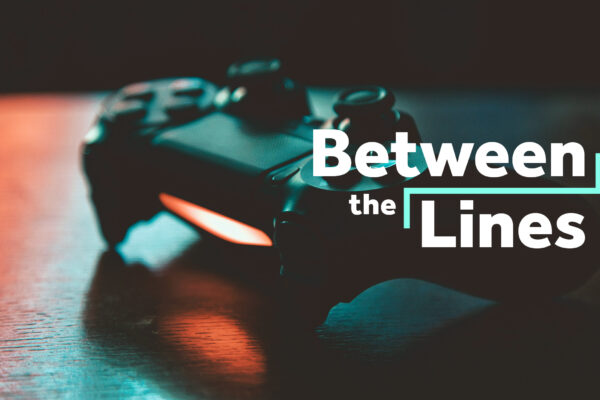Every June, without fail, social media lights up with rainbows as brands of all shapes and sizes rush to “honor,” “commemorate” and “support” Pride Month and the LGBTQ+ community. Many “honor” and “commemorate” it with limited edition Pride-themed merchandise, a pithy new slogan (or so the brand thinks) and a social media post or two.
In other words, a marketing campaign. Come July, and it’s right back to the cisgender, heterosexual marketing strategy with the monochromatic logos that have dominated American business for the last 200 years.
Welcome to the birth of rainbow capitalism, where some think they can reap all of the rewards without any of the actual work. At the end of that rainbow is not, as some brands want to believe, a pot of gold, but rather people. More specifically, people of a historically marginalized community that—as GLAAD president Sarah Kate Ellis told CNN—feel “valued only because the sands have shifted” and it’s now widely acceptable to value them.
It’s worth noting how exactly we got here, because it wasn’t all that long ago that most brands didn’t participate in Pride Month at all, and when something as simple as swapping a standard logo for its rainbow variant for 30 days might’ve been considered enough.
It’s not anymore, and some brands are paying the price for thinking it is and for, frankly, believing that the LGBTQ+ community is too short-sighted to notice a disingenuous money-grab when it sees one.
Ultimately, the burden of proof to show that a brand cares about more than a person’s wallet is on the brand. With marginalized communities in particular, the standard is higher, the level of scrutiny more pronounced, and it extends far beyond the quality of a targeted marketing campaign, becoming instead an audit of the brand itself: its core values, its track record of diversity, equity and inclusion, both internally and externally, its political stances and contributions and more.
As Vice notes, the list of companies thinking they can play both sides without anyone noticing or calling them on it is long: Bank of America, Verizon, Pfizer, Coca-Cola, AT&T, Wal-mart—each of these brands happily embraced the visible electromagnetic spectrum on Twitter. Actually embracing the full spectrum of people, identities, sexual orientations and genders…much less so.
The most recent wave of rainbow-washing comes amid a record year for legislative attempts to restrict the rights of transgender people. Many of those brands listed above made political contributions to state lawmakers advocating for such legislation. Welcome to the world of rainbow capitalism.
At the end of that rainbow is not, as some brands want to believe, a pot of gold, but rather people.
It’s not, however, all bad. There are many brands genuinely approaching not just Pride Month, but diversity, equity and inclusion across marginalized communities with thoughtfulness and authenticity. For those who believe in inclusion as a value—and are serious about communicating it to the rest of the world for more than just their own gain—there are valuable lessons to be learned.
Here’s what those brands are doing right.
THEY RECOGNIZE THAT INCLUSION ISN’T A MONTHLY THEME.
Pride Month comes and goes every year—as does every other heritage or history month—but the fight for equality and inclusion is forever. So rather than think about what you or your brand should be doing for Pride Month, or African-American History Month, or Women’s History Month or any other moment in time, start thinking instead about how you can advocate, spread awareness, promote inclusion and diversity, and—most importantly—take action during the other 11 months of the year.
Have you considered donating to LGBTQ+ advocacy groups or sponsoring a community event? Does your brand speak out against legislation that restricts the rights of members of the LGBTQ+ community? Do you embrace the importance of connecting to the cause rather than people’s wallets?
If so, there are plenty of organizations and people that need more than just a message of your brand’s support or a month-long logo change. You can find a brief list of resources, organizations and advocacy groups here that would be grateful to accept a financial contribution that might have otherwise been spent on a marketing campaign.
THEY BUILD A CULTURE OF INCLUSION INTERNALLY FIRST.
We’ve said it before: Nothing screams lack of authenticity more than launching an external communications campaign that is fundamentally at odds with a company’s internal culture. You can scream, “We’re inclusive!” all you want, but you’re not the one who gets to make that call. Your employees do.
There are a variety of ways to promote a culture of inclusion. Here’s a list of 31 companies that have adopted a range of initiatives—from resource groups and inclusive health benefits to expansive non-discrimination policies—to promote diversity, equity and inclusion.
THEY UNDERSTAND THE LGBTQ+ COMMUNITY IS MORE THAN AN ACRONYM.
Nick Wolny, founder of Hefty Media Group and a contributor for Entrepreneur, wrote in 2019 that “the LGBTQ+ community is fractured when it comes to visibility and progress. A transgender woman of color, for example, sees more day-to-day challenges to her lifestyle and existence than a white gay man, who by contrast has likely been out and visible for years.”
The wide range of experiences further emphasizes the potential brands have to stop checking the boxes on their monthly marketing calendars and to actually pursue methods of storytelling that represent and normalize those experiences instead of stereotyping them.
Ultimately, a desire to be perceived well is not the same as a desire to do good. Brands consistently focused on the latter rarely have to worry about the former. The same cannot be said of the reverse.





